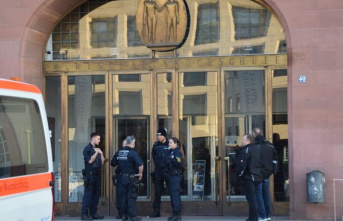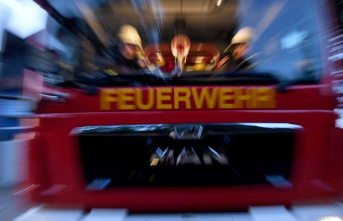It is a brilliantly beautiful, sunny Tuesday on February 3rd, 1998, when tourists romp on the slopes of the Italian mountain town of Cavalese. The skiing conditions are perfect.
The Cermisbahn, a cable car, takes skiers to the Alpe Cermis, a 2200 meter high mountain in the Fiemme Valley Alps. The cable car operates with two gondolas. Shortly after 3 p.m., around 20 passengers boarded one, including a ski group from Burgstädt near Chemnitz in Saxony. In the second gondola, however, only the driver sits, who is preparing for the return journey. Shortly before, a US fighter jet with four people on board had taken off for a training flight from the nearby NATO base Aviano.
At 3:13 p.m., the gondola is just around 110 meters above the valley, the catastrophe occurs: the EA-6B “Prowler” machine, flying low at more than 870 kilometers per hour, severed the six-centimeter-thick cable with the right wing . Unchecked, the gondola races towards the ground and bores into the hard, snow-covered ground.
When the fire brigade arrived at the scene of the accident, the emergency services saw a horrific sight. The gondola resembles a car under a scrap press. After hours of work, they are only able to recover the bodies of eleven men and nine women using welding equipment. The other gondola stayed in the air for about an hour after the other cabin crashed. Although the gondola driver can be rescued alive, he suffers severe mental disorders.
Meanwhile, the crew of the fighter plane has no idea what they just crashed into. Since the hydraulics are no longer functional and they are losing fuel, they report an emergency and initiate an emergency landing. Finally, they make it back to Aviano Air Force Base. There the commanding officer brings them the sad news.
All 20 people on board the gondola are dead: eight Germans, five Belgians, three Italians, two Poles, one Austrian and one Dutchman. The oldest victim is 61 years old, the youngest 13. Serious allegations appear in the newspapers. There is a suspicion that the crew acted negligently. They also apparently flew with a video camera on board, but investigators only find a blank tape inside. Was valuable evidence destroyed here?
Anger at the behavior of the pilots is spreading among local residents. In the vicinity of the American air base at Aviano, from where the crew took off for the accident, numerous cars with American license plates were damaged. Newspapers also report death threats at the air base and American families.
About a year after the incident, the four marines were brought before a military court in the United States. However, only the 33-year-old pilot Richard Ashby and his navigator have to answer on suspicion of negligent homicide.
As it turns out, according to the flight data recorder, the prescribed minimum altitude of 300 meters was not reached more than once. In addition, Ashby is said to have flown faster than the permitted 830 kilometers per hour. However, he claimed that the radar altimeter on the plane would have given no warning.
But more details are coming to light. The crews were apparently not properly informed about the guidelines for low-level flight. Shortly before the flight, the prescribed minimum altitude had been increased to 610 meters. But apart from one of the pilots of the flying squadron who were interviewed, none of them had heard of this regulation. In addition, the cable cars were not entered on the maps that the pilots used for their low-level flights. A circumstance that surprised the American cartography authorities. As it turned out, the information about the ropes had been erased from the database.
During the process, an expert in spatial orientation also assumes that the pilot did not use the horizon as a reference point due to the low-level flight, but rather the end of the valley. As this kept sinking in his field of perception, he instinctively went into descent and down to 160 meters. This may not have been shown to him because the radar altimeter had dropped out. According to the expert, when the rope suddenly appeared in front of him, Ashby was subjected to an optical illusion and assumed it was above him, which is why he quickly pushed the joystick forward. As a result, the machine automatically tilted downwards to the left and severed the cable with the right wing.
The jury finally found the pilot and his navigator not guilty on all charges on March 4, 1999. However, two months later, in a second trial, he was sentenced to six months in prison for obstructing the investigation and was dishonorably discharged from the army along with the navigator. As it turned out, the men had removed the videocassette from the camera and exchanged it for a new one. The Navigator later took the cassette from Ashby and burned it. Allegedly because he could be seen boisterously and laughing and he didn't want his happy face to be published next to the pictures of blood in the snow in the press.
Two years after the cable car accident, the families of the victims each received 3.8 million Deutschmarks in compensation. According to a NATO agreement, the USA must reimburse 75 percent of the compensation amount. It was the highest compensation ever paid in Italy. Memorial stones in the Cavalese cemetery commemorate the victims.
Sources: National Geographic, DPA, Investigation Report d. Italian Chamber of Deputies











